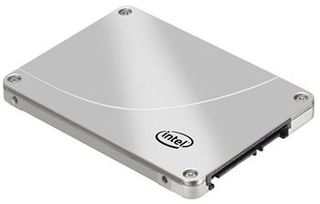Intel Readies New 313 Series Caching SSDs for Ivy Bridge
With Ivy Bridge around the corner, Intel is set to release its new 313 SSD caching series based on 25 nm SLC NAND flash memory.
Intel is set to replace its Larson Creek series (311 series) just in time for the Ivy Bridge processors with the Hawley Creek series (313 Series). The 313 series will use 25 nm SLC NAND flash memory and be designed for Ivy Bridge's new 7-series chipset, while maintaining backwards compatibility with current 6-series chipsets.

In addition to moving to 25 nm NAND flash from 34 nm NAND flash, Intel will now be offering two capacities of 20 GB and 24 GB with the 313 series (only 20 GB with the 311 series). We aren't exactly sure what the extra 4 GB will give you in a cache drive outside of the extra capacity, but Intel has added it for a reason, so we'll have to play the waiting game on its benefits. As with the 311 series, the drives will still utilize a SATA 3.0 Gb/s interface and will be based on either a 2.5-inch or mSATA form factors. The 2.5-inch drives will be 7 mm tall versus the 9 mm of the 311 series. This move continues the trend by most SSD manufactures to decrease the size of SSDs to allow the drives to be utilized in Ultrabooks.
As for pricing, it looks like Intel's MSRP for the 20 GB model is around $99 dollars and the 24 GB around $119 dollars. These new drives should be available for purchase around the time-frame of the Ivy Bridge and 7-series chipsets launch.
Stay On the Cutting Edge: Get the Tom's Hardware Newsletter
Get Tom's Hardware's best news and in-depth reviews, straight to your inbox.
-
EDVINASM Can someone explain why should this 20GB drive should be purchased for $100 when 80GB is only $20 more? Lightning fast speeds? Sexy casing?Reply -
fatalshot808 I think we can all agree $1-2 per GB is a standard now for SSD. 5$ per gigabyte too much I don't see the point in paying that much for very limited storage. I understand this is a cache drive but for 20Gb you can get alot more bang for your buck.Reply -
rpmrush It's SLC NAND. It's durable and hence expensive. MLC is not durable enough for a cache drive. Constant writes would wear MLC out too quickly. SLC is ideal for cache. Yes it is expensive, yet reliable for this application.Reply -
drwho1 To me this is both a waste of time making this useless POS, and a waste of money for anyone who would fall for this ****.Reply
(go ahead thumb me down)
But to me, a better or at least decent boot drive has to be at minimum 120GB.
I would prefer mSata 120GB IF they would use their OWN controller without having to disable one SATA
controller.
mSATA disables one SATA controller which makes it a BAD choice.
(I want the flexibility to ADD more TB drives, so loosing ONE SATA controller does not make me happy at all)
-
a4mula These are intended as use as cache drives working with Intel Smart Response Technology. You do not install anything to them. 20GB is more than sufficient for space in this role and because this is a SLC drive it's going to stand up to the wear of the cache writes. If you have no interest in SSD caching then obviously you'll look elsewhere.Reply -
warezme a4mulaThese are intended as use as cache drives working with Intel Smart Response Technology. You do not install anything to them. 20GB is more than sufficient for space in this role and because this is a SLC drive it's going to stand up to the wear of the cache writes. If you have no interest in SSD caching then obviously you'll look elsewhere.So why not just have 24GB or more of system memory and create a cache drive off of that on boot up? It would be faster and cheaper.Reply
-
Vatharian These are NOT intended to use as any VISIBLE disk at all.Reply
I'm using two X25-E 32GB for my squid proxy machine as cache storage, and these need faster replacement, since number of users went up from 20 to 80. When you compare the X25-E and 313, these are practically as for free. I'm in! Simple H67 mobo will suffice for four of them. After that upgrade old X25-Es will end up in raid 1 as boot drives.
Most Popular




